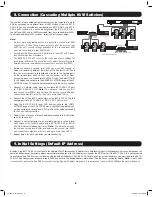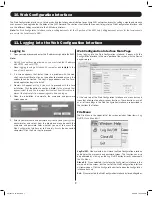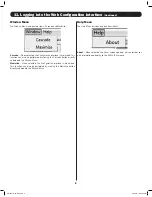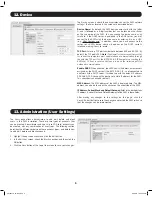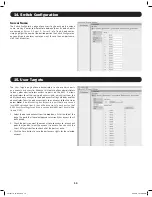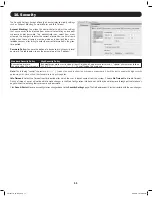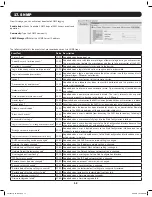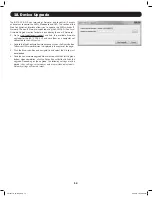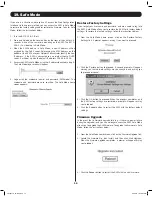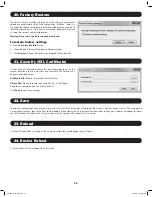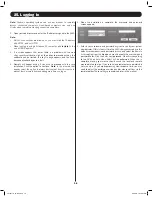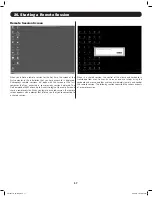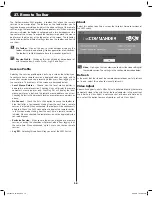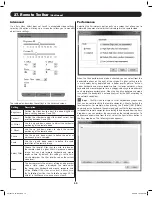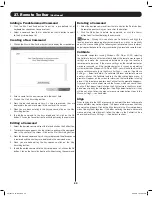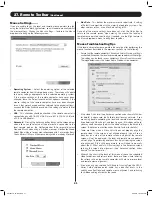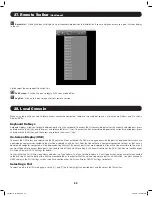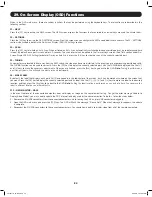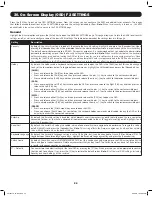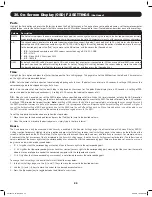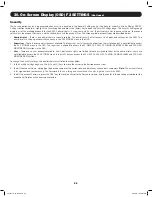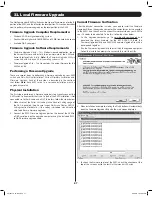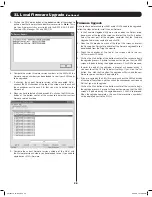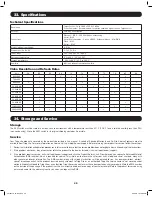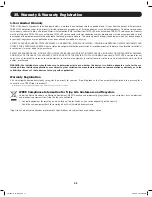
20
Adding a Predetermined Command
1. Click the
Add Predefined
button to pull up a pre-defined list of
keyboard key sequences to choose from.
2. Select a command from the list and click on the
OK
button to add it
to the
Keys
drop-down list.
Creating a New Command
1. Click on the
Record New Custom Key
button to display the screen below.
2. Enter a name for the new command in the
Label
field.
3. Click on the
Start Recording
button.
4. Press the desired command keys. As keys are pressed, they are
displayed in the command area in the center of the screen.
5. When you are done entering in the key sequence, click on the
Stop
Recording
button.
6. To add the command to the
Keys
drop-down list, click on the
OK
button. Click on the Cancel button to exit without saving the command.
Editing a Command
1. Select the desired command from the list and click on the
Edit
button.
2. The record screen appears, with the current sequence in the command
area in the center of the screen. Click on the
Start Recording
button.
3. Press the desired command keys. As keys are pressed, the old sequence
is removed and the new keys are displayed in the command area.
4. When you are done editing the key sequence, click on the
Stop
Recording
button.
5. To add the edited command to the
Keys
drop-down list, click on the
OK
button. Click on the
Cancel
button to exit without saving the command.
Deleting a Command
1. Select the desired command from the list and click the
Delete
button.
A prompt appears asking you to confirm the deletion.
2. Click the
OK
button to delete the command, or click the
Cancel
button to exit without deleting the command.
Mouse
– Clicking this icon allows you to
Calibrate
and
Align
the
local and remote mouse pointers automatically, as well as to manually
adjust the mouse settings.The following sections explain these features,
and also provide general tips for synchronizing the local and remote mice.
Calibrate
For remote computers running Windows NT4, 98 or 2000, selecting
the
Calibrate
feature will automatically detect the remote mouse speed
settings and make the necessary adjustments to align the local and
remote mouse pointers. If the mouse settings on the remote computer
were ever changed, or if the remote computer is running an operating
system other than Windows NT4, 98 or 2000, you will have to adjust the
mouse settings manually via the
Mouse Settings
….. screen. (See
Mouse
Settings
….. below for details.) To calibrate the local and remote mouse
pointers, click on the Calibrate feature in the
Mouse
drop-down menu. A
prompt will appear on the screen to inform you that calibration is taking
place. If the two mouse pointers don’t align after the prompt disappears,
try moving the mouse cursor around the screen, which can cause them
to align. If that doesn’t work, click on the
Align
feature in the
Mouse
drop-
down menu to bring the two together. (See
Align
below for details) If they
still do not align, follow the manual mouse synchronization steps in the
Mouse Settings
…. section below.
Align
When logging into the KVM or accessing a new port, the local and remote
mouse pointers may not be aligned. This does not always mean that they
are not set up properly. Click on the
Align
feature in the
Mouse
drop-down
menu to bring them together. If this does not bring the local and remote
mouse pointers into alignment, follow the steps in the
Calibration
(See
above) and/or
Mouse Settings
…. (See below) sections.
27. Remote Toolbar
(Continued)
201204111 93-2769.indd 20
8/2/2012 10:16:03 AM

